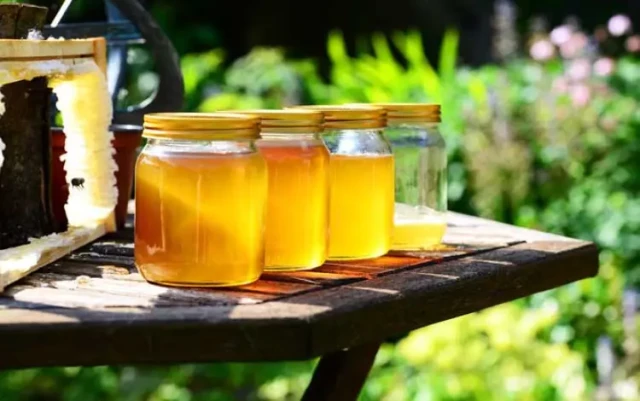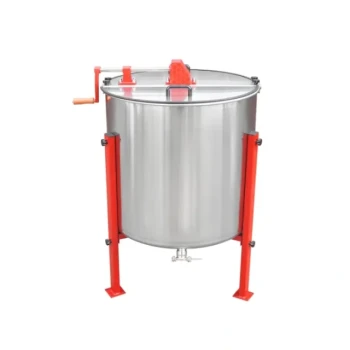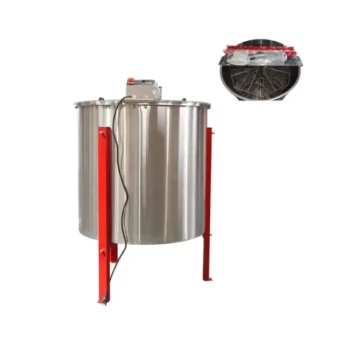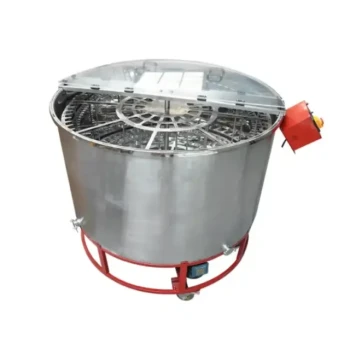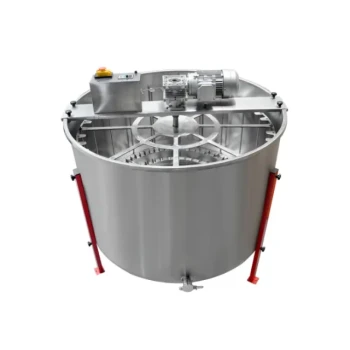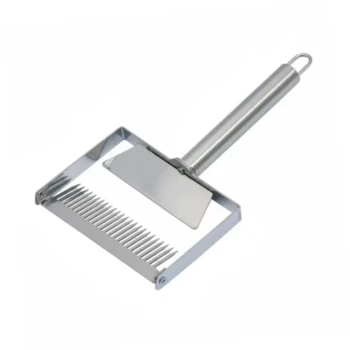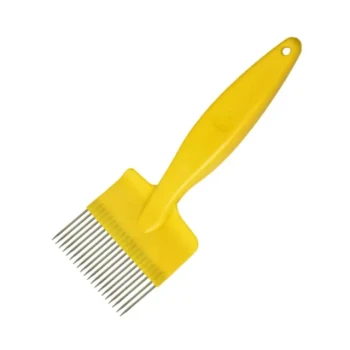For beekeepers, harvesting honey is both an art and a science. Done correctly, it ensures high-quality honey while maintaining hive sustainability. This guide covers actionable techniques—from identifying ripe honeycombs to storing honey properly—so you can maximize yield without compromising bee welfare.
Harvesting Honey from a Hive
Identifying Ripe Honeycombs: Beyond Capping Levels
A capped honeycomb doesn’t always guarantee readiness. Look for these signs:
- Uniform capping: Cells should be fully sealed with wax, indicating low moisture content (under 18%).
- Color and weight: Ripe combs appear darker and feel heavier due to concentrated nectar.
- Hive activity: Bees guarding the super less aggressively often signal harvest readiness.
Pro Tip: Use a refractometer to test moisture levels if uncertain. Overly wet honey risks fermentation.
Safe Hive Handling and Comb Removal Techniques
Minimize bee stress during harvest with these steps:
- Timing: Harvest mid-morning when most foragers are away. Avoid rainy or cold days—bees are more defensive.
- Gentle tools: A bee brush clears bees without harm, while a hive tool pries frames apart cleanly.
- Smoke wisely: Light smoke calms bees but overuse masks alarm pheromones, causing confusion.
Did you know? Bees can detect weather changes. Drought reduces nectar flow, making them more protective of stored honey.
Operating a Honey Extractor: Manual vs. Centrifugal Methods
| Method | Best For | Pros | Cons |
|---|---|---|---|
| Manual Press | Small-scale beekeepers | Affordable; no power needed | Labor-intensive; slower |
| Centrifugal | Commercial operations | Faster; preserves comb for reuse | Higher upfront cost |
- Manual presses excel for "crush-and-strain" honey, preferred by buyers who enjoy trace wax.
- Centrifugal extractors (tangential or radial) maximize efficiency but require careful speed control to avoid comb damage.
Post-Extraction Comb Management for Hive Reuse
Returning combs to hives boosts efficiency—bees rebuild faster than starting from scratch.
- Clean gently: Scrape excess propolis but avoid harsh chemicals.
- Store properly: Keep in a pest-proof container with a light vinegar spray to deter wax moths.
Storing and Processing Harvested Honey
Filtering and Preventing Fermentation
- Double-filter through mesh (coarse then fine) to remove debris while retaining pollen.
- Temperature control: Store at 14°C (57°F) to delay crystallization. Warmer temps risk fermentation; colder speeds solidification.
Hygroscopic Storage Solutions
Honey absorbs moisture, so airtight containers are non-negotiable:
- Food-grade buckets with gamma-seal lids for bulk storage.
- Glass jars for retail-ready honey, kept away from sunlight to preserve flavor.
Sustainability Tip: Reuse crystallization-prone honey as winter bee feed—it’s healthier than sugar syrup.
Ready to Elevate Your Beekeeping Operation?
HONESTBEE equips commercial apiaries and distributors with reliable, bee-friendly harvesting tools—from centrifugal extractors to moisture-testing kits. Explore our wholesale solutions to streamline your workflow and protect your hive’s health.
Key Takeaways
- Harvest when combs are fully capped and heavy.
- Prioritize gentle bee handling to reduce stress.
- Choose extraction methods based on scale: manual for small batches, centrifugal for large yields.
- Store honey in airtight containers at stable temperatures.
Visual Guide
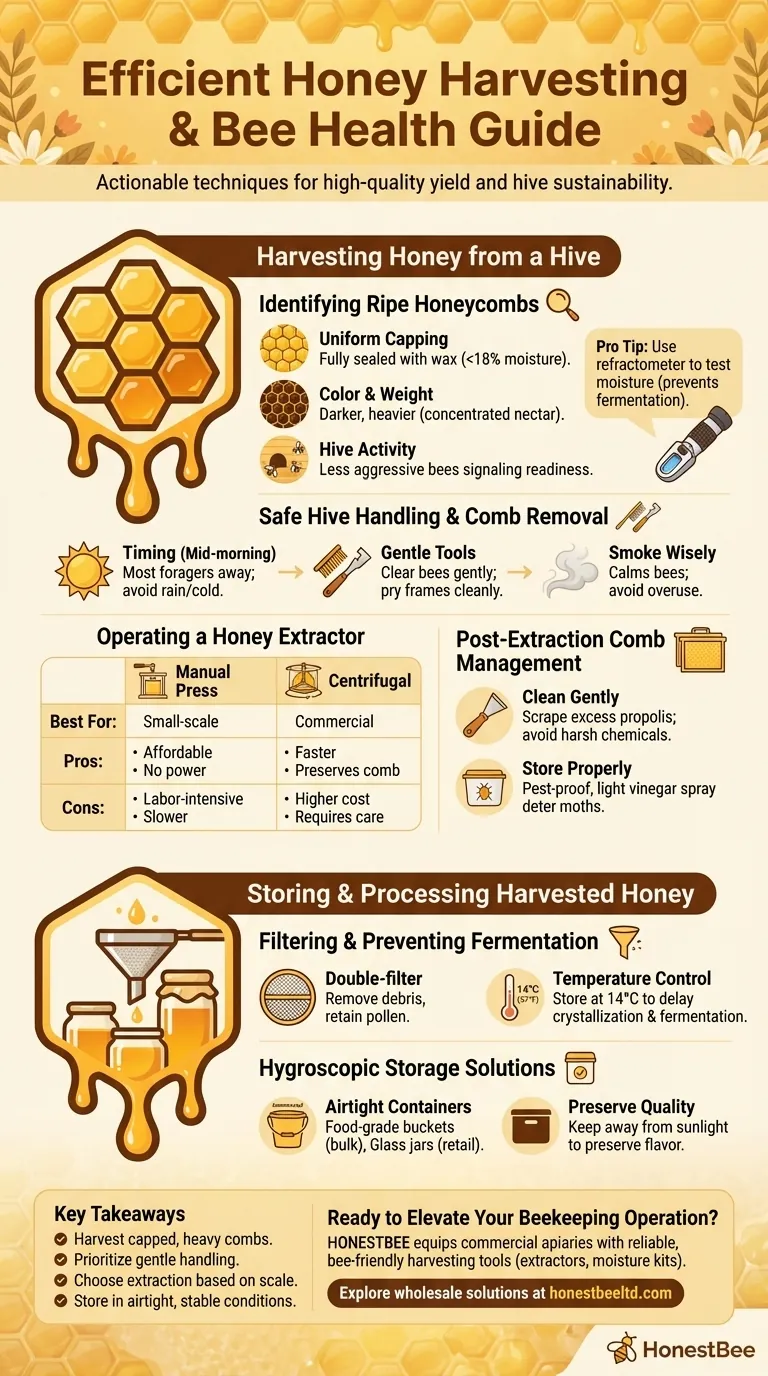
Related Products
- 2 Frame Stainless Steel Manual Honey Spinner Extractor for Beekeeping
- HONESTBEE 3-Frame Manual Acrylic Honey Extractor
- 6 Frame Manual Stainless Steel Honey Extractor Beekeeping Equipment
- Electric 8 Frame Honey Spinner Extractor Equipment for Beekeeping
- Stainless Steel 3 Frame Manual Honey Extractor Spinner for Bee Honey Extraction
Related Articles
- How to Ethically Harvest Honey Without Compromising Bee Colony Survival
- Guide to Successful Honey Extraction and Its Benefits
- Centrifugal Extractors vs. Honey Presses: Choosing the Right Tool for Your Beekeeping Goals
- Guide to Choosing the Best Honey Extractor for Beekeeping
- How to Choose the Perfect Honey Extractor for Your Beekeeping Needs
